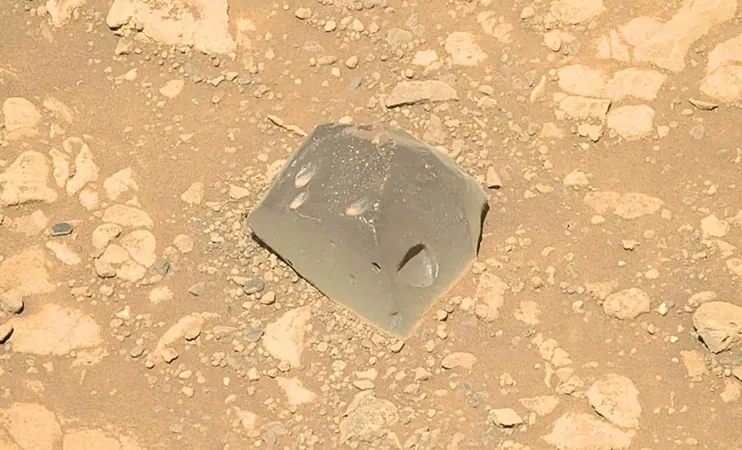
Mysterious ‘Skull Hill’ Rock Found on Mars: Could It Change Our Understanding of the Red Planet?
2025-04-24
Author: Sophie
NASA’s Perseverance Rover Makes a Groundbreaking Discovery
In a stunning revelation, NASA’s Perseverance rover has unveiled a peculiar rock formation on Mars that could be pivotal in redefining the planet's geological saga. Tucked away on the rim of the Jezero Crater, this striking rock has been dubbed ‘Skull Hill’ for its eerie, skull-like appearance.
What is ‘Skull Hill’? A Geological Mystery
Unveiling its dark tone and unique, angular surface, ‘Skull Hill’ raises intriguing questions about its origin. Located at a key intersection known as ‘Port Anson,’ where contrasting bands of light and dark rocks converge, this rock could hold vital information about the geological processes that have shaped Mars.
An Enigmatic Float Rock
Defying easy classification, ‘Skull Hill’ is described as a ’float rock,’ suggesting it likely migrated from its birthplace to its current position. This adds an extra layer to its mystery, as scientists ponder where this rock originally came from.
Features That Captivate Scientists
The most prominent feature of ‘Skull Hill’ is its stark contrast against the lighter-toned rocks nearby. Its surface bears striking pits, likely formed through erosion or wind scouring. Additionally, nearby spherules—small spherical structures—present further clues to Mars’ ancient environment, hinting at possible volcanic activity or even conditions that might have once supported life.
Could ‘Skull Hill’ Be a Meteorite?
Initially, some scientists speculated that ‘Skull Hill’ could be a meteorite, similar to dark meteorites uncovered by the Curiosity rover in Gale Crater, known for their high iron and nickel content. However, after a keen analysis using Perseverance’s SuperCam, it appears that ‘Skull Hill’ doesn’t match the chemical profile of typical meteorites found on the Martian surface.
The Igneous Rock Theory
With meteorite origins now in question, the scientific team is exploring another intriguing hypothesis: could ‘Skull Hill’ be an igneous rock formed from cooled lava or magma? Such rocks, rich in minerals like olivine and pyroxene, frequently display a dark hue, making this theory more plausible.
Impact Origin Possibility
Another compelling theory suggests that ‘Skull Hill’ may have been ejected from a nearby impact crater caused by a massive collision in Mars’ tumultuous past. Impact events often scatter debris across the surface, which could mean ‘Skull Hill’ is simply a fragment displaced from its original crater site.
Ongoing Investigations
As scientists continue to analyze this extraordinary rock, they are employing an array of advanced instruments onboard the Perseverance rover to meticulously investigate its precise chemical composition, further peeling back the layers of Mars’ geological history.
Stay Updated!
Curious about updates on ‘Skull Hill’ and other Mars discoveries? Subscribe to our newsletter for captivating stories, exclusive insights, and the latest breakthroughs from the Red Planet!









 Brasil (PT)
Brasil (PT)
 Canada (EN)
Canada (EN)
 Chile (ES)
Chile (ES)
 Česko (CS)
Česko (CS)
 대한민국 (KO)
대한민국 (KO)
 España (ES)
España (ES)
 France (FR)
France (FR)
 Hong Kong (EN)
Hong Kong (EN)
 Italia (IT)
Italia (IT)
 日本 (JA)
日本 (JA)
 Magyarország (HU)
Magyarország (HU)
 Norge (NO)
Norge (NO)
 Polska (PL)
Polska (PL)
 Schweiz (DE)
Schweiz (DE)
 Singapore (EN)
Singapore (EN)
 Sverige (SV)
Sverige (SV)
 Suomi (FI)
Suomi (FI)
 Türkiye (TR)
Türkiye (TR)
 الإمارات العربية المتحدة (AR)
الإمارات العربية المتحدة (AR)